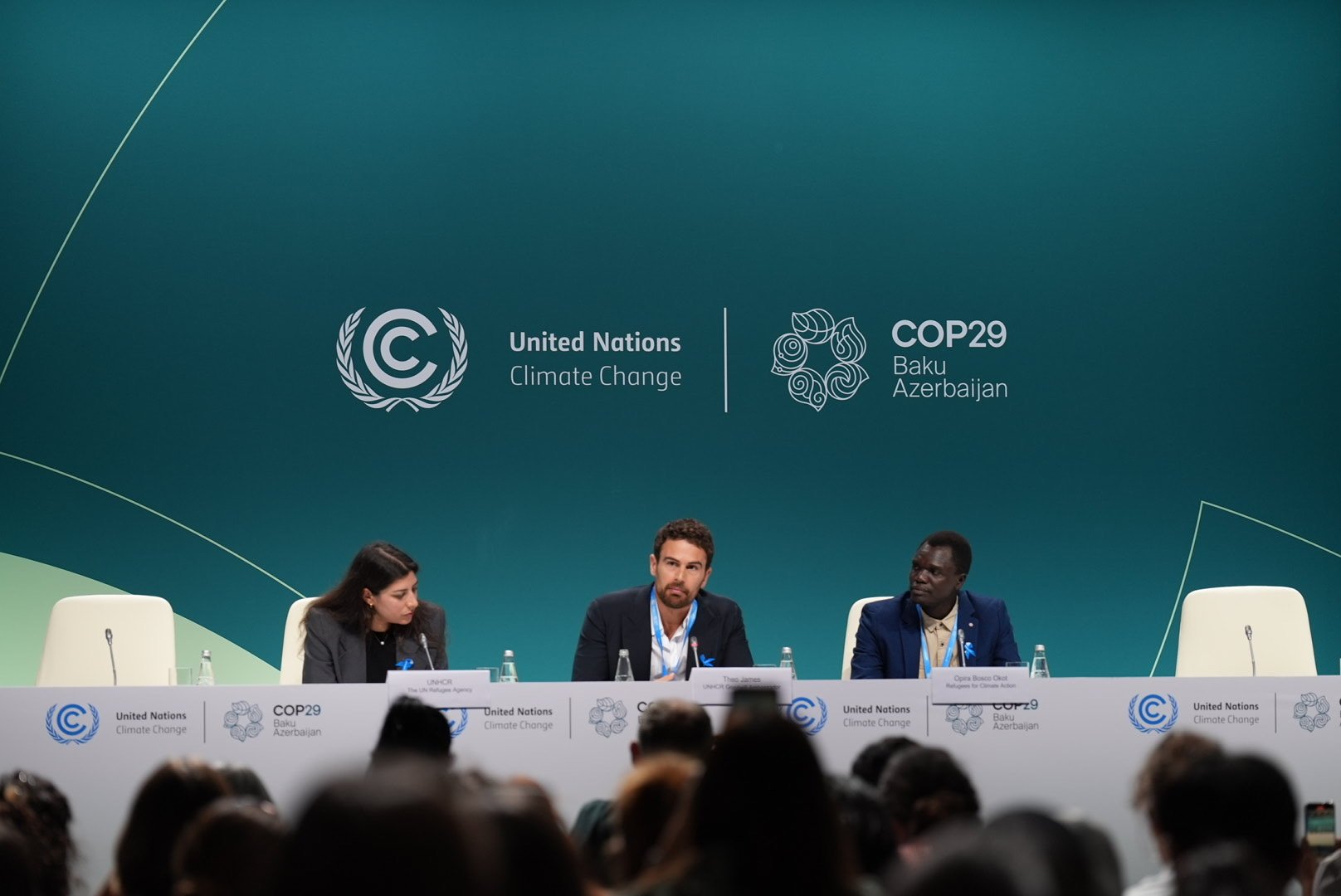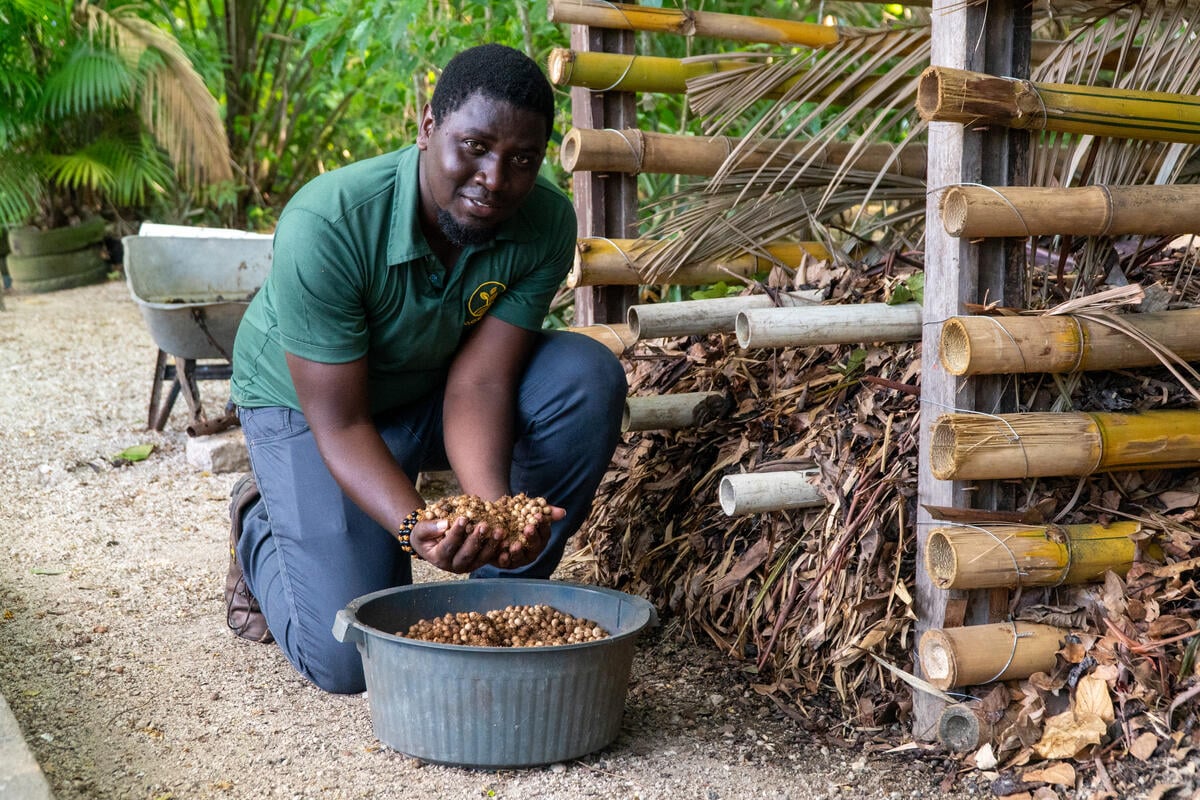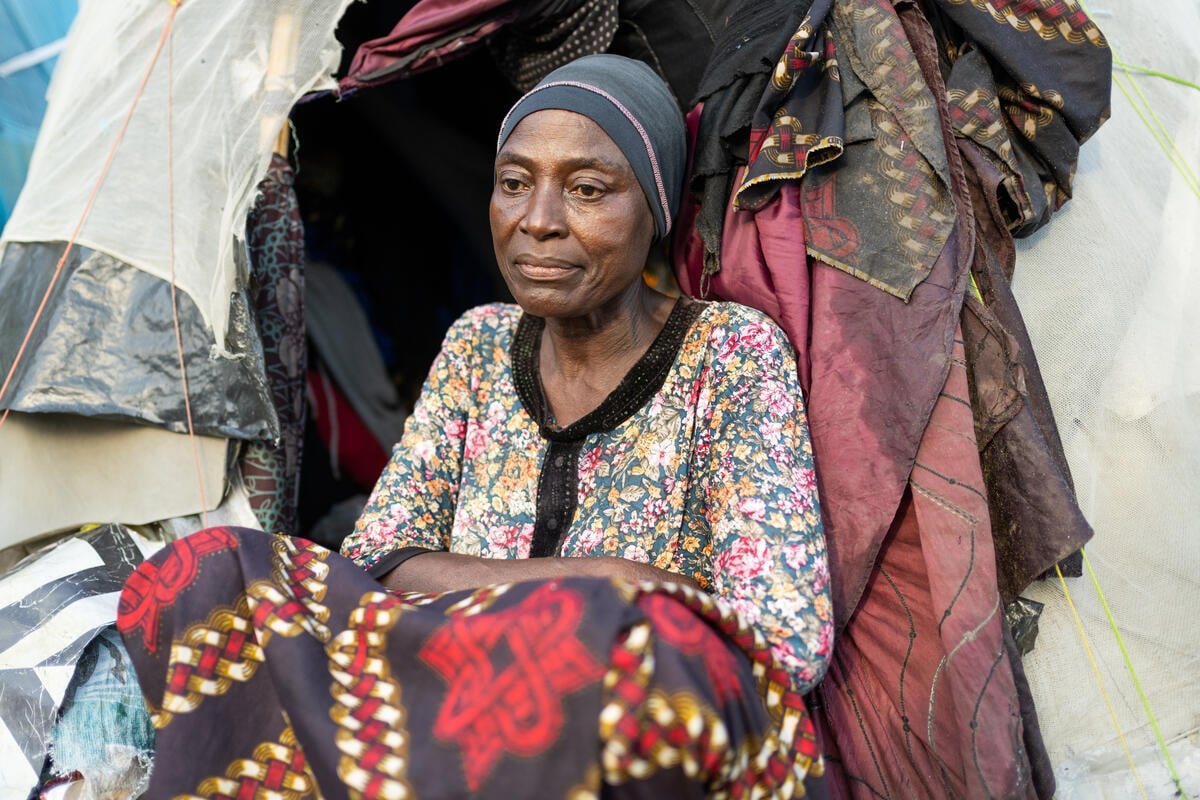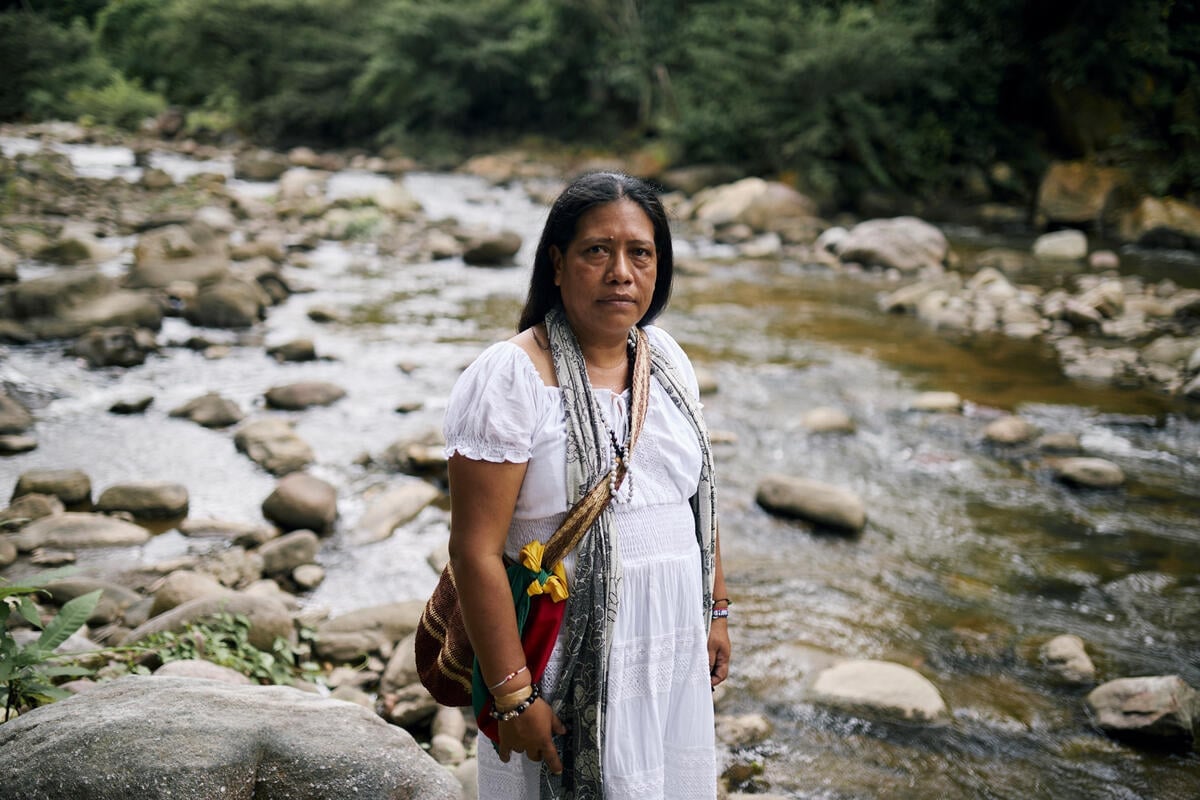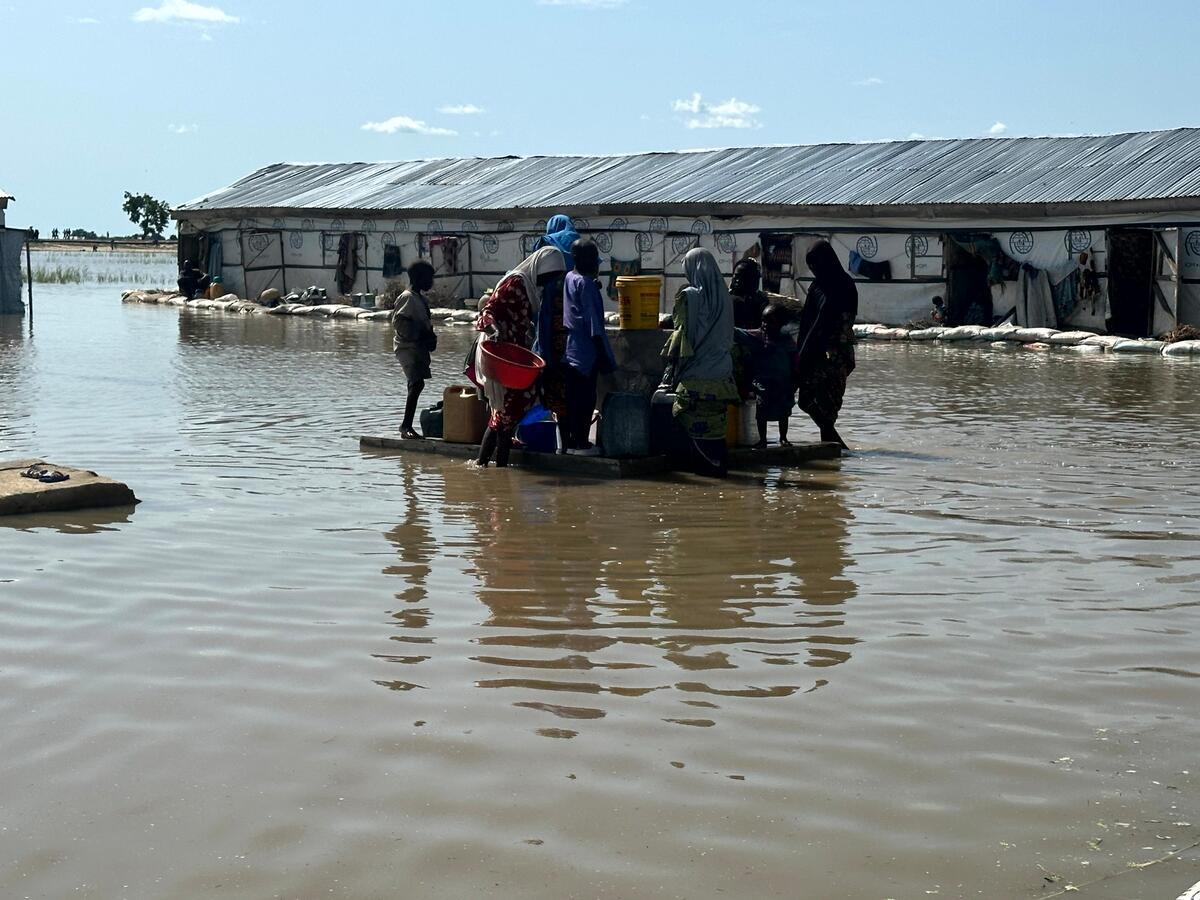Strengthening climate adaptation and resilience
Strengthening climate adaptation and resilience

Climate-related shocks and stresses such as floods, cyclones, wildfires and droughts pose significant risks to refugees and internally displaced people (IDPs). Many live in climate-vulnerable situations, often in makeshift housing where they typically lack the resources, means and capacities to adapt to increasingly extreme and unpredictable weather.
The impacts of these climate hazards can also further limit their access to livelihoods and work opportunities. Likewise, the strain on limited local natural resources, such as water or arable farming land, can contribute to tensions between displaced populations and host communities.
UNHCR, the UN Refugee Agency, works with States and partners to ensure people forced to flee and their host communities living in highly climate-vulnerable conditions can withstand, recover and be protected from new or worsening threats to their lives and livelihoods that climate change is fueling.
At the core of our climate action is a commitment to enhancing the adaptation and resilience of refugees, internally displaced people and host communities to climate risks.
Strengthen preparedness and response to climate-related shocks and slow-onset crises
UNHCR works with and supports host governments to protect refugees and other forcibly displaced people impacted by climate-related shocks such as cyclones, floods, wildfires, major storms and slow-onset disasters such as drought-related food and livelihood crises. We aim to complement the efforts of local government actors, working to ensure refugees, IDPs and stateless people and host communities receive life-saving humanitarian assistance and protection in a timely and effective manner.
Where needed, we will deliver non-food items, such as blankets, tarpaulins and provide sustainable and climate-resilient shelter to shield displaced people from heavy rains or other hazardous weather. We may also provide cash assistance to help impacted community members purchase the items they need, such as hygiene items, following an emergency.
Advocate with governments to include forcibly displaced people in polices and plans on climate adaptation and disaster risk reduction and management
We advocate and support governments and humanitarian and development partners to create or expand national climate change adaptation and disaster risk management services to include refugees and forcibly displaced people. In a displacement crisis, the sudden influx of displaced people to a new area where they are not officially resident, or a new country where they are not a citizen, can pose a challenge as the new community may fall outside of a host government's existing disaster risk management plans. As such, we work with partners to support governments and local responders to create or expand early warning systems and preparedness measures to include areas that host displaced people. We also work to ensure returnee communities are included in national and local disaster risk reduction and climate change adaptation policies, plans and programmes.
Work with forcibly displaced people to preserve and rehabilitate the environment
UNHCR works with forcibly displaced communities to preserve and rehabilitate the environment in camps or informal settlements. This may include supporting tree planting, sustainable agriculture, and greening efforts in camps. We aim to ensure they can access services that promote the sustainable use of natural resources and maintain a clean and healthy environment.
We are also driving a transition to renewable energy, for example by solarizing boreholes, health centres and schools serving displaced people and their hosts. By increasing forcibly displaced people’s access to climate-smart services, we can reduce dependence on scarce natural resources which helps lessen tensions with host communities. Whenever we can, we also advocate with governments and development partners to invest in environmentally sustainable public services for communities that host displaced and stateless people.
We also try to help forcibly displaced populations to find climate-resilient and environmentally sustainable jobs and livelihoods. This could include managing a solar power station in a refugee camp or community, setting up a small business to produce and sell eco-friendly handicrafts from recycled materials, or sustainable farming projects to grow vegetables.
Where does UNHCR work on climate action?
We are working toward the long-term vision across our more than 130 country operations, regional bureaux and headquarters. We are particularly focused on 22 countries hosting large numbers of forcibly displaced and stateless people that are highly vulnerable to climate change.
As part of our humanitarian response in South Sudan, we are partnering with refugees and their hosts to convert flooded areas into food opportunities, enhancing communities’ climate resilience.

In Pakistan, we are providing clean energy to over 250,000 refugees and their hosts with the support of development partners. This has increased refugees’ access to livelihood opportunities and self-reliance.
In Uganda, we have supported the design of a government government-led plan for water and environment in refugee-hosting areas and attracted new development funding to benefit refugees and their hosts.

In Malawi, we are partnering with the African Union on parametric climate risk insurance for displaced populations, aiming to provide refugees predictable financing when a climate shock hits. This strengthens their economic resilience to climate change.
Resources
UNHCR policy, frameworks, plans and guidance for climate action
- Strategic Framework for Climate Action
- Policy on Emergency Preparedness and Response
- Strategic Plan for Climate Action 2024-2030
- Operational Strategy for Climate Resilience and Environmental Sustainability 2022-2025
- Global Strategy for Sustainable Energy 2019-2025
- East and Horn of Africa and Great Lakes: Climate Action Plan | Global Focus (unhcr.org)
- Asia and the Pacific: Climate action Plan | Global Focus (unhcr.org)
- The Green Companion Guide (to embedding environmental considerations in sectoral programming)
- Practical Guidance for UNHCR Staff on IDP Protection in the Context of Disasters and the Adverse Effects of Climate Change
Resources from partner organizations
- UNDRR guide and checklist on Scaling up disaster risk reduction in humanitarian action
- United Nations Plan of Action on Disaster Risk Reduction for Resilience
- IFRC Guide to climate-smart programmes and operations
- World Bank The Adaptation Principles: A guide for designing strategies for climate change adaptation and resilience
- The Global Plan of Action for Sustainable Energy Solutions in Situations of Displacement
Related information



